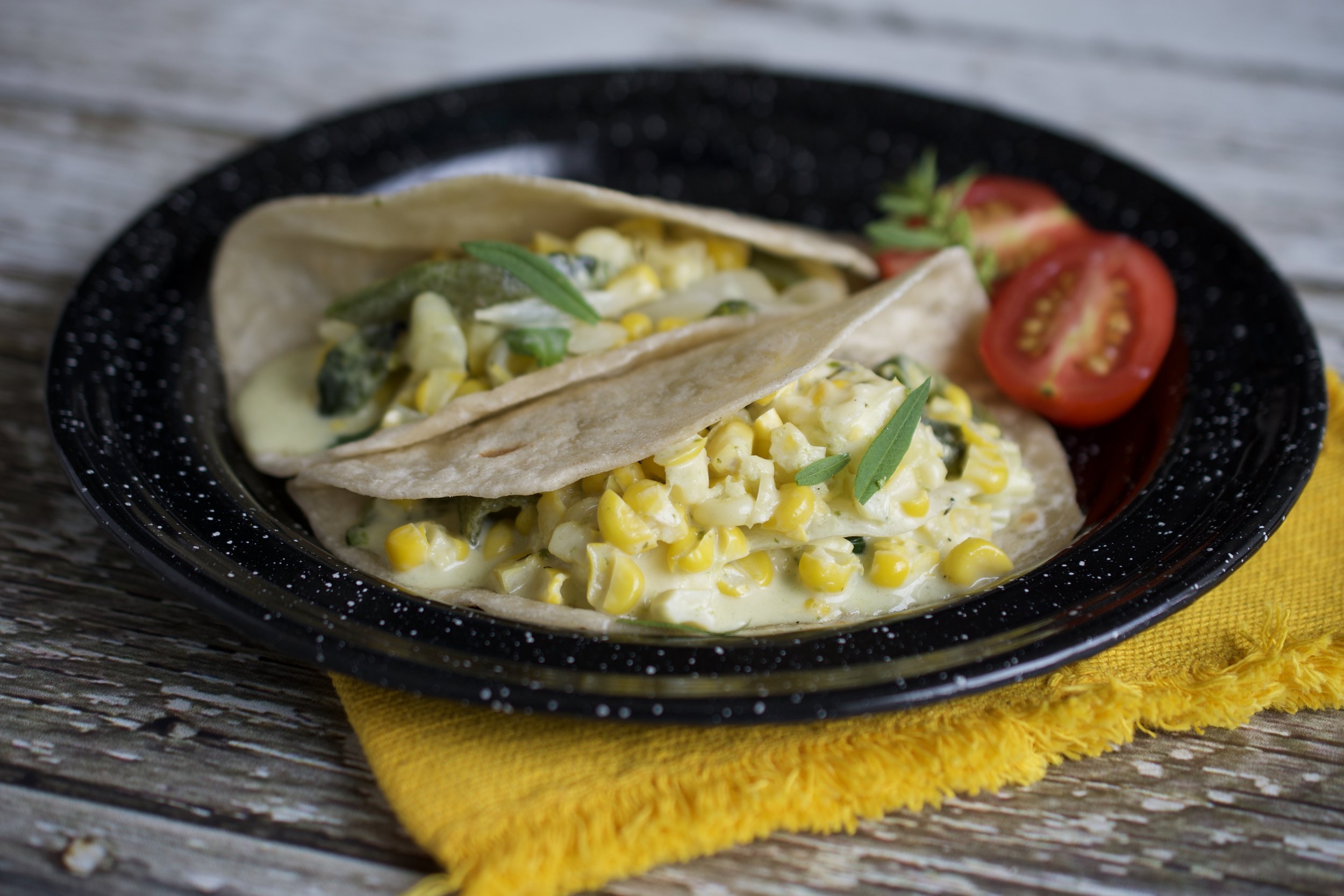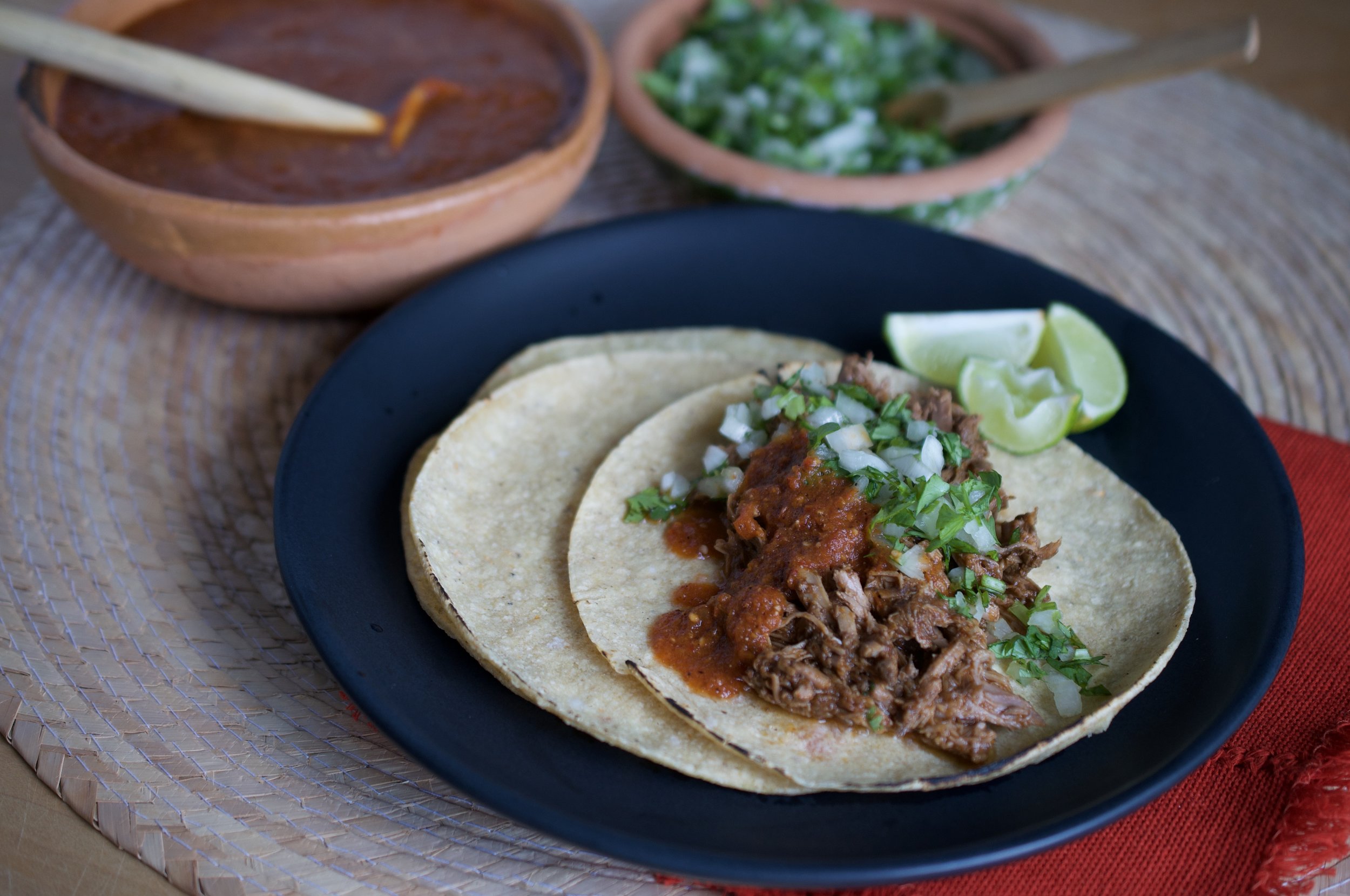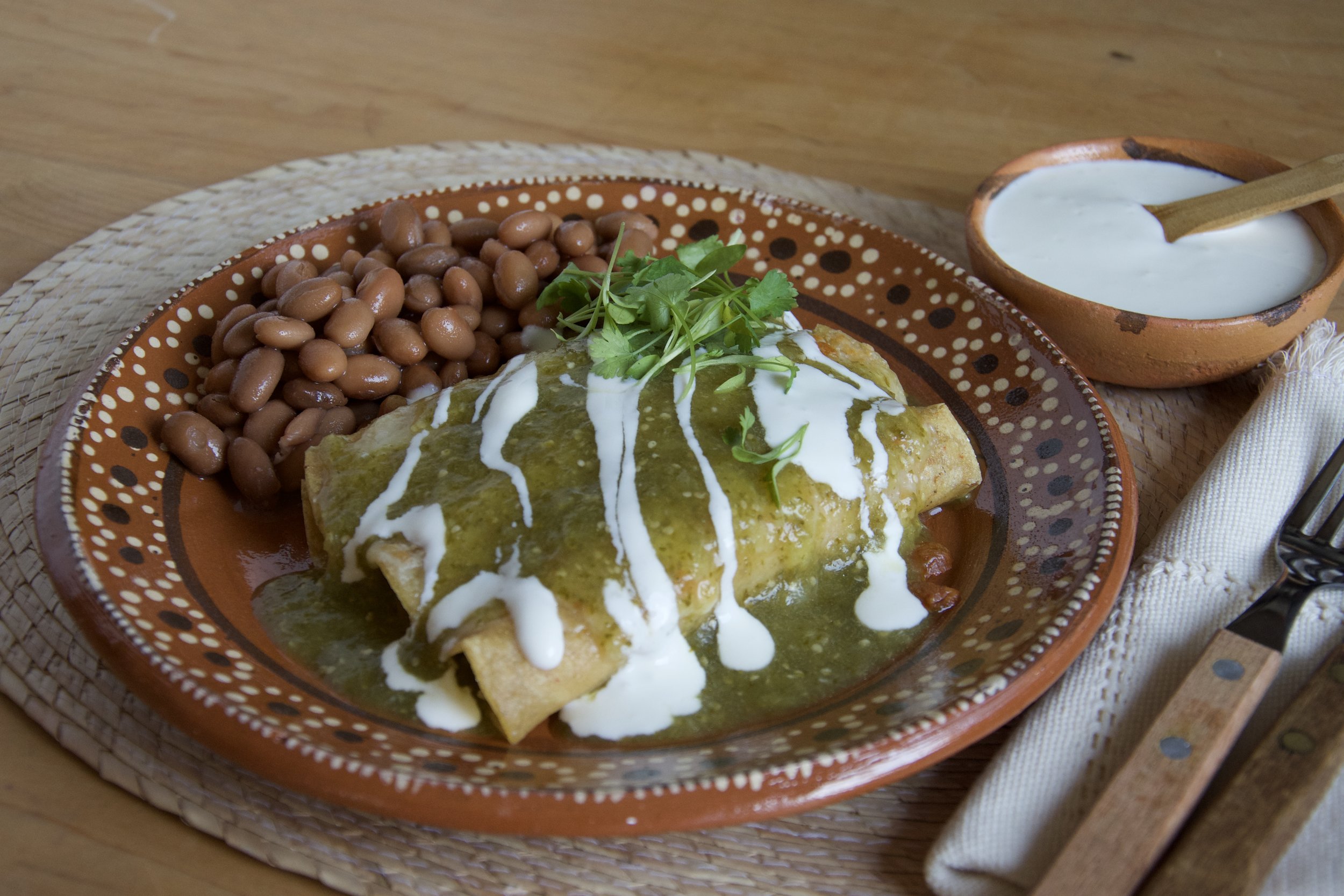There is a world of Antojitos in the Mexican cooking repertoire, and Gorditas are one of my favourites… for obvious reasons! Like a warm, compact sandwich, a Gordita holds any number of fillings, ranging from the humblest refried beans, to scrambled eggs, to picadillo, to chicharrón in green salsa (my favorite!).
From the first bite, you savour a rich corn dough flavoured with manteca - that porky-tasting lard Mexicans love. The filling is, of course, your choice, but that is what makes these Gorditas so much fun. They can be filled with breakfast, lunch or dinner items, though more often than not, Gorditas are eaten for lunch or dinner.
Gorditas are very similar to Venezuelan or Colombian Arepas, the difference being in the flour used. In Mexico we use nixtamalized masa, whereas in south America they used a corn flour that is coarser in texture. Technique is almost the same. Another cousin of the Gordita is the Salvadorean Pupusa, using the same masa as we do in Mexico, but pupusas are cooked with the filling inside from the beginning. All are delicious.
You can make Gorditas without lard, but in my opinion, the ones that do have lard in the mixture are infinitely better tasting, to say nothing of the texture of the dough, which is more moist and less likely to crumble and dry up. Some gorditas are cooked on the griddle and then fried, but that is every cook’s choice. This version is like the ones I have tried in the central State of Zacatecas, and they are delicious!
A filling of beans is all you need for these little guys, and a showy garnish of finely shredded cabbage, crumbled salty cotija cheese (or feta if you can’t find cotija) and pico de gallo, topped with a spicier salsa. I can guarantee these will fly off the plate!
Gorditas de Masa Estilo Zacatecas
Masa Cakes Zacatecas Style
2 cups Maseca
1 tsp kosher salt
1 ½ cup hot water approx
¼ cup manteca (rendered lard)
1 cup refried beans
2 cups finely shredded cabbage or lettuce
1 cup crumbled cotija, fresh or feta cheese
2 cups pico de gallo
1 cup spicy salsa
In medium bowl, place Maseca and mix in kosher salt. Start adding warm water, a bit at a time, as you work the dough, until you have a smooth dough that’s not too sticky. Add lard and work it into the dough.
Divide the dough into 8-12 portions, depending on the size you want your gorditas. Flatten them until they are 3/8” thick, making sure edges are nice and smooth.
Cook on pre-heated griddle about 3 minutes per side initially, and then turning every minute or so until they are nicely speckled. Remove and place on a tray and keep in a warm oven until all gorditas are cooked.
When ready to serve, split gorditas open and spread with refried beans. Top with pico de gallo, shredded cabbage and cheese. Finish off with a spicier salsa if desired. Serve warm.
Makes 8 gorditas.





















